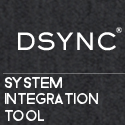By Rowdy Ratts
Like many others, I’ve been patiently awaiting the arrival of my Raspberry Pi order. For now, I have lots of time to figure out what to do with it once it arrives. I have a few projects I’d like to do, but one in particular stands out – Advanced Alarm Clock. I certainly can’t take credit for the initial idea of making an advanced alarm clock out of a Raspberry Pi computer, but I do look forward to making one just how I want it to be.
Very recently I finally got the opportunity to place my order. Unfortunately the order confirmation email that they eventually sent me quoted a delivery date of sometime in August. From other sources I’ve seen, I suspect (well, hope really) that my delivery date will move up a bit once manufacturing gets up to full speed.
Anyway, back to the alarm clock project. I’m really curious to see how others implement this same basic idea, but here is my current plan. I’ve been wanting to get this typed up and out of my head, so I figured I’d share it with you guys. Please keep in mind that I am not a programming genius. I took several classes in college and know my way around OOP to a degree, but this will definitely be a learning experience for me.
Main Controller:
The main unit will be located right by my bed and will include a small display with a keyboard/mouse. Note: Once it’s finished and operational, I’ll build an iPhone app to eliminate the need for the keyboard and mouse.
The display in normal mode will show the time, date and alarm settings (but keep them separate and clear). I would also set up the main display to show the next days (or current day if it’s in the morning) weather forecast, as well as a RSS ticker for feeds I’ve selected to show. The snooze button (which I’ll install on the headboard) will allow me to turn the monitor off when I’m ready to go to sleep.
Setup mode will allow me to add as many Events as I want. Events may be assigned to one or more days and will control/activate other objects, such as “turn on radio” or “turn on light”. Setting it up this way will allow me to schedule events at a specific time/day and perform specific functions.
For example, I could set an event for Tuesday morning at 8:00 AM to stream the Mark & Brian Radio Program (955klos.com) at volume 2 (increasing to level 6 over 1 minute), then turn the room light on at 8:10AM. The snooze button will mute the audio for 8 minutes and then come back on. I might also limit the snooze button to 2 activations only. And….. If I can get my hands on an accelerometer to connect to the unit, I’ll attach that to my mattress so it will automatically customize the alarm activation time for when I’m naturally more awake (just like the popular iPhone app “Sleep Cycle” does, but without having to shove your iPhone under the fitted sheet every night).
Other events could be set up for the same time/day to perform other actions such as turning on the coffee pot or opening the blinds (assuming I want to fork out the dough for that mechanism).
Additional Nodes:
Once the main alarm clock is set up, I’ll buy additional Raspberry Pi computers to network with the alarm clock and also perform other functions. One will become a media player for my TV, but will also double as an event function for the alarm clock. This will allow the alarm clock to turn on the TV or Radio downstairs at a nice loud volume level.
Another networked computer will be located in the kitchen to receive a command to turn the coffee pot on. That one would also have it’s own monitor and keyboard/mouse mounted on the wall to easily look up recipes and manage the shopping list (which I’ll be able to access from my iPhone).
A lot of people have been coming up with great ideas for their Raspberry Pi computer, like the above ideas. Alone, each of the ideas can be a useful resource in one’s home, but I think people commonly underestimate the potential of these little guys. If you have several computers, each dedicated to specific functions, try to think about how other systems could benefit from the services offered by that computer. This is really home automation at it’s finest. Each computer will operate independently for it’s specialized task, but will also offer it’s service to the network as needed.
If you don’t already have lots of inspiration from that concept, here’s another example. You might have one set up in your kitchen as above to look up recipes and save your grocery list. Another RPi might be set up with a web cam to monitor who is at your front door. You could connect a doorbell to that unit that, when pressed, will display video from the web cam onto the kitchen monitor (as well as your Advanced Alarm Clock) and allow it to be used as an intercom too. If there’s no response to the “video doorbell”, video recorded of the front door (as long as there’s motion) would be saved and sent your main computer for storage, and a still image from the beginning of the video would be logged and emailed to you.
Honestly, I’m starting to like this idea a bit more than the advanced alarm clock. Luckily I have a couple months to figure out which project I’ll start with. Then as more RPi’s become available for re-orders, I’ll buy a few more and fill up my spare time getting them to do my bidding. With any luck, this new community of RPi enthusiasts will share their code in an open-source fashion so we can all feed off each others advancements.
If you haven’t yet placed your order, a limited number of orders for Raspberry Pi are currently being accepted through http://www.TinyPuters.com. Get your order placed right away to reserve your place in line.
Article Source: http://EzineArticles.com/?expert=Rowdy_Ratts


Leave a Reply